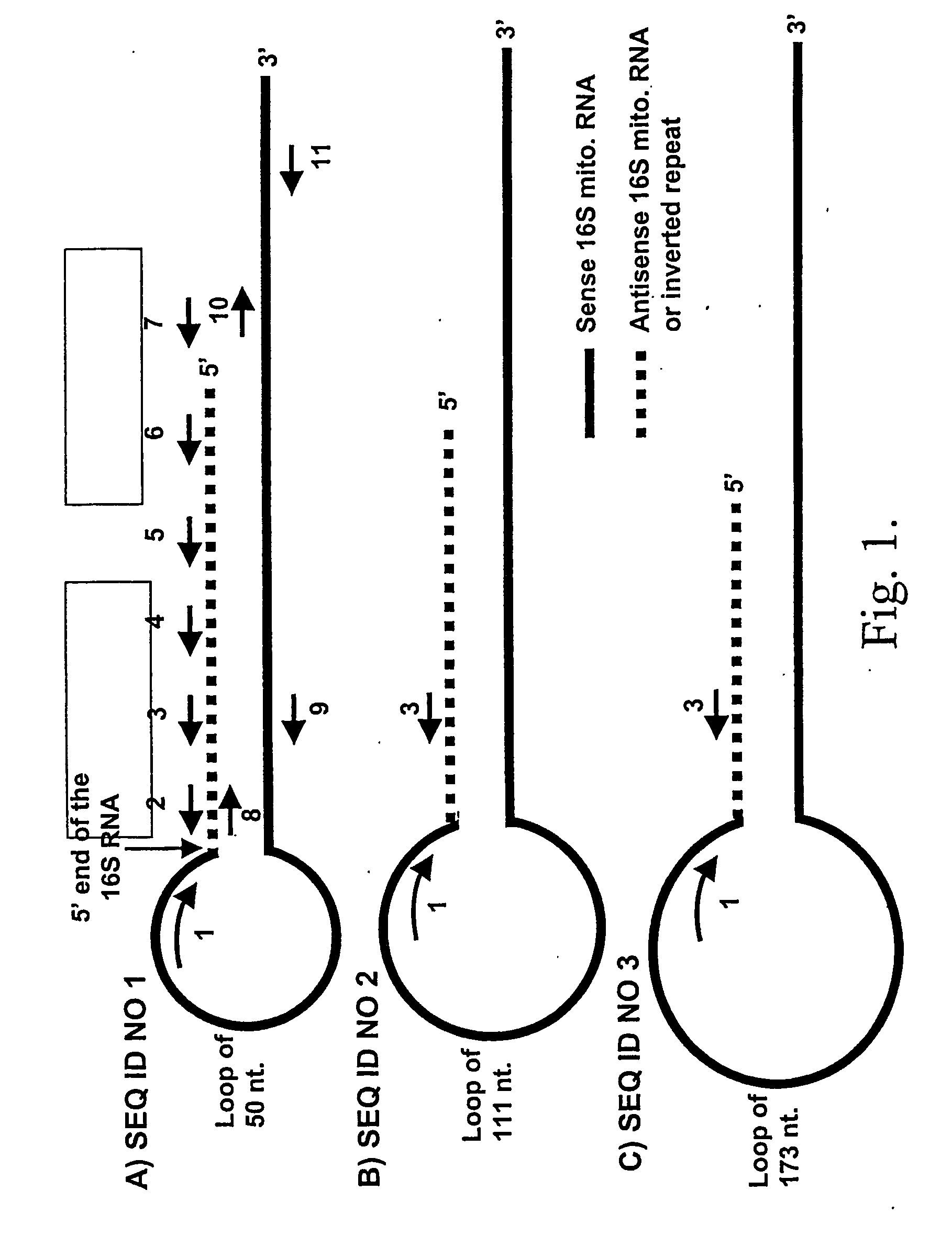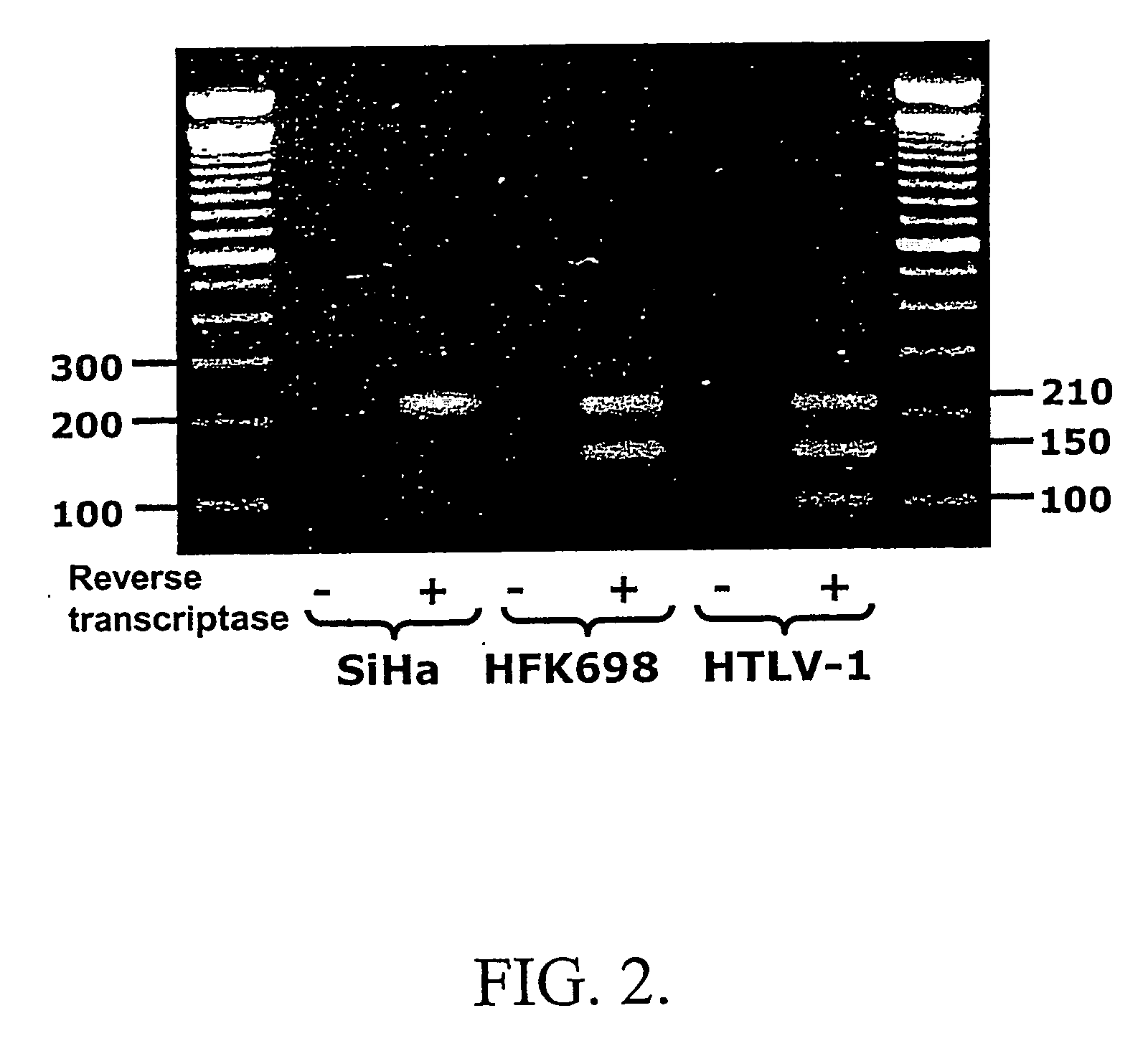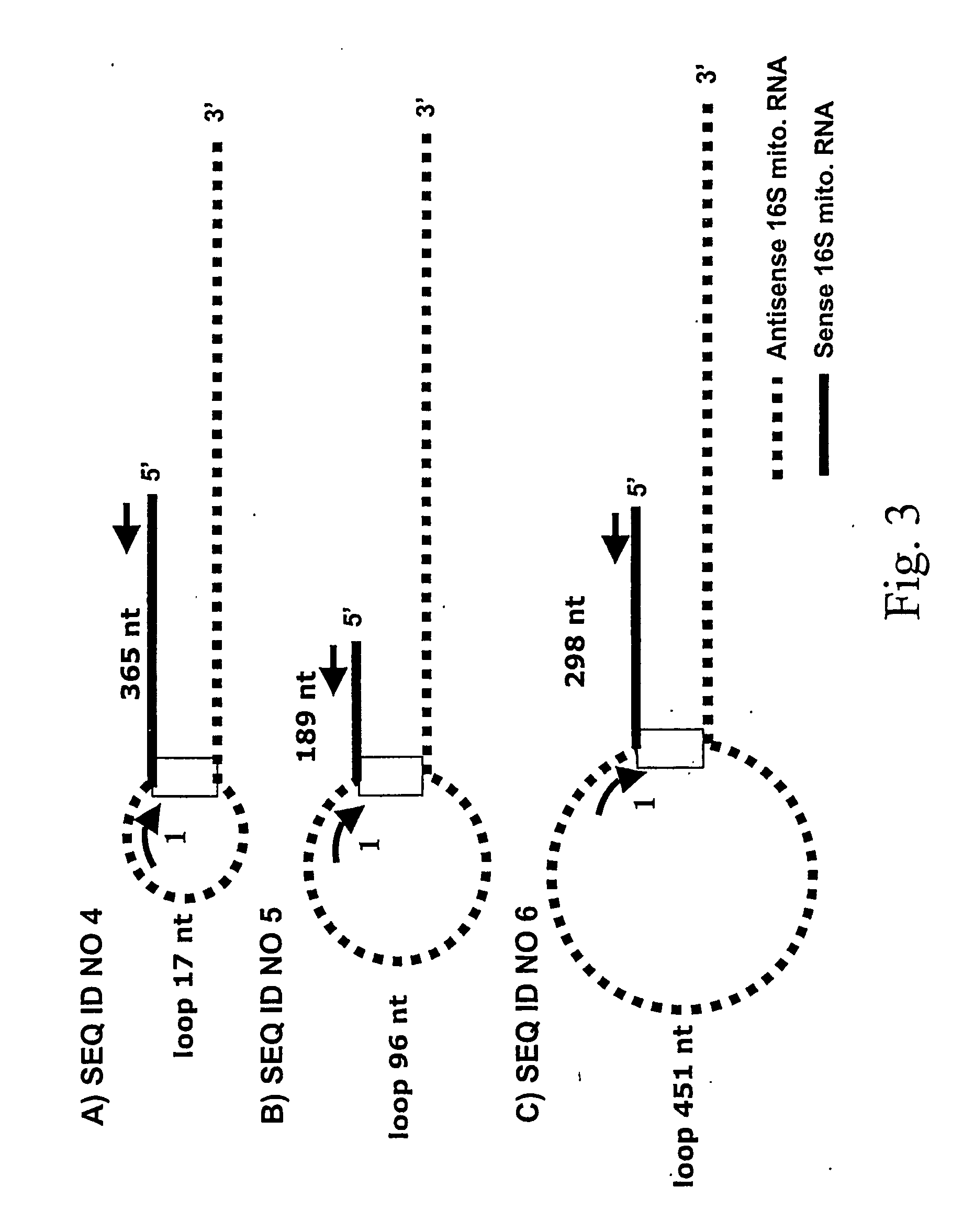Markers for pre-cancer and cancer calls and the method to interfere with cell proliferation therein
- Summary
- Abstract
- Description
- Claims
- Application Information
AI Technical Summary
Benefits of technology
Problems solved by technology
Method used
Image
Examples
example 1
Isolation and Sequence of the Sense Mitochondrial Human Chimeric RNA. (FIG. 1A, SEQ ID NO1)
[0094] Initial experiments indicated that the putative human sense mitochondrial chimeric RNA contained a more complex and stable secondary structure that the mouse chimeric RNA (Villegas et al., DNA & Cell Biol. 19:579-588, 2000; Villegas et al., Nucleic Acids Res. 30:1895-1901, 2002). Therefore, and based in the mouse mitochondrial chimeric RNA secondary structure, a theoretical human sense mitochondrial chimeric RNA secondary structure was deduced (FIG. 1A). The theoretical human transcript contained the complete sequence of the sense 16S mitochondrial RNA joined by the 5′ end to a fragment of the antisense 16S mitochondrial RNA forming a loop of unknown length (FIG. 1A). The segment of the antisense 16S mitochondrial RNA was fully complementary to the sense 16S mitochondrial RNA and therefore corresponded to an inverted repeat joined to the 5′ end of the sense 16S transcript. Based on th...
example 2
Human Keratinocytes Transformed with Papilloma Virus Synthesize a Novel Sense Mitochondrial Chimeric RNA (FIG. 1B, SEQ ID NO 2).
[0102] Human foreskin keratinocytes (HFK) were transformed by incubation with a lysate of cells previously infected with the human papilloma virus 16 (HPV 16). The cells were cultured with 3 parts of K-SFM, one part of DMEM medium (Invitrogen), 5 ng / ml of EGF, 50 ug / ml of pituitary extract and 10% calf fetal serum. The culture conditions were 37° C. and 5% CO2. After 24 hours of infection, the transformed HFK were transferred to a new flask and grown under the same conditions. After this time the cells (HFK698) were successively transferred to new culture flasks every 3 days using a split ratio of 1:3 to 1:4. After passage 19th the cells (HFK698 transformed with HPV 16) were harvested as described (Hausen, Biochim. Biophys. Acta, 1288:F55-F78, 1996), collected by centrifugation at 300×g for 10 min and washed twice with saline phosphate buffer (PBS). Total...
example 3
Cells Transformed with HTLV-1 Induce the Expression of a Third Novel Sense Mitochondrial Chimeric RNAs (FIG. 1C, SEQ ID NO 3).
[0104] Human MT-2 cells transformed with HTLV-1 were cultured as described (Kobayashi et al., EMBO J., 3:1339-1343, 1984). The cells were harvested, centrifuged at 300×g for 10 min and washed twice with PBS. The final cell pellet was extracted with Trizol as described in Example 1. The cDNA was synthesized with random hexamers using the RNA as template and the cDNA was amplified by PCR using the reverse primer 1 and the forward primer 3 as described in FIG. 1A. As described before, this amplification protocol yields an amplicon of 210 base pair that contains the first 31 nucleotides of the sense 16S mitochondrial RNA joined to an inverted repeat of 184 nucleotides which corresponds to the sense mitochondrial chimeric RNA as described in Example 1. Electrophoresis analysis of the amplification products revealed, besides the presence of the already discussed ...
PUM
| Property | Measurement | Unit |
|---|---|---|
| Electrical conductance | aaaaa | aaaaa |
| Length | aaaaa | aaaaa |
| Composition | aaaaa | aaaaa |
Abstract
Description
Claims
Application Information
 Login to View More
Login to View More - R&D
- Intellectual Property
- Life Sciences
- Materials
- Tech Scout
- Unparalleled Data Quality
- Higher Quality Content
- 60% Fewer Hallucinations
Browse by: Latest US Patents, China's latest patents, Technical Efficacy Thesaurus, Application Domain, Technology Topic, Popular Technical Reports.
© 2025 PatSnap. All rights reserved.Legal|Privacy policy|Modern Slavery Act Transparency Statement|Sitemap|About US| Contact US: help@patsnap.com



